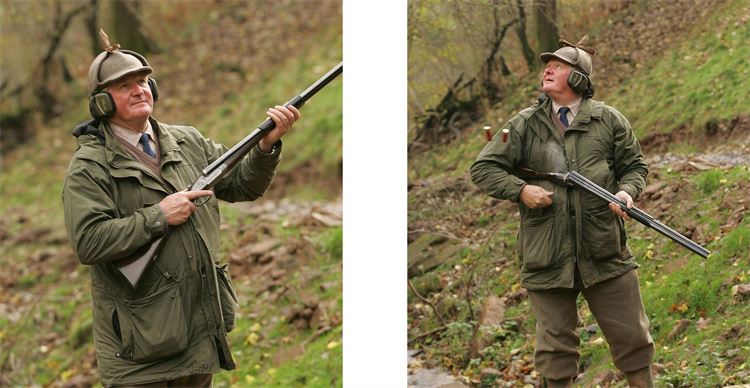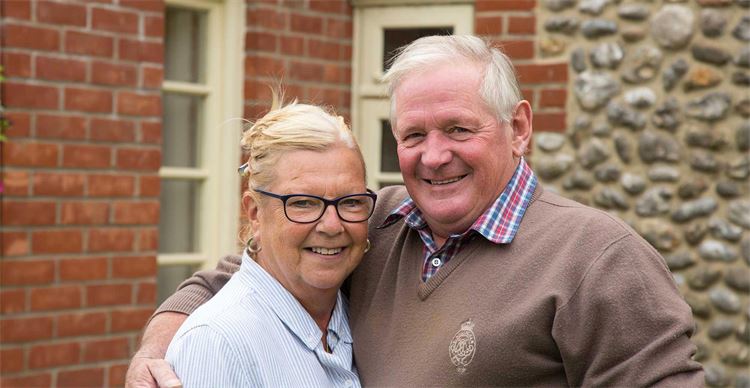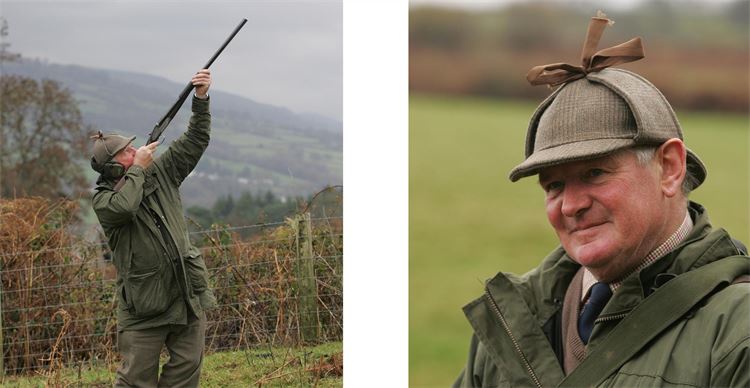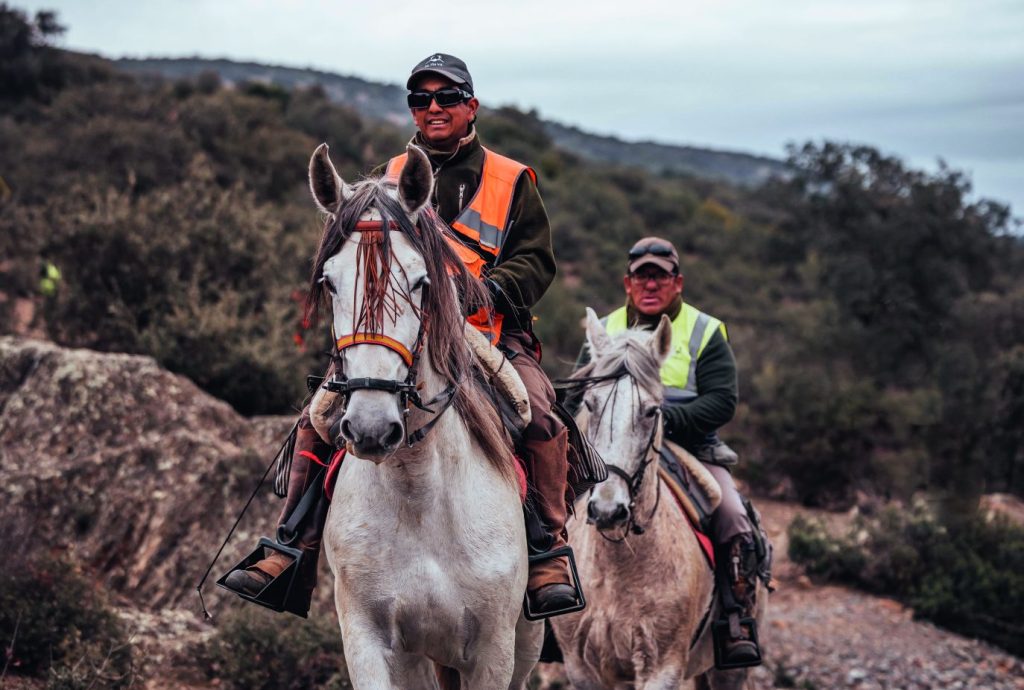An interview with David Clark LVO
The former headkeeper of 17 years on Her Majesty the Queen’s Sandringham Estate, Honorary President of the National Gamekeepers’ Organisation and Lieutenant of the Victorian Order.
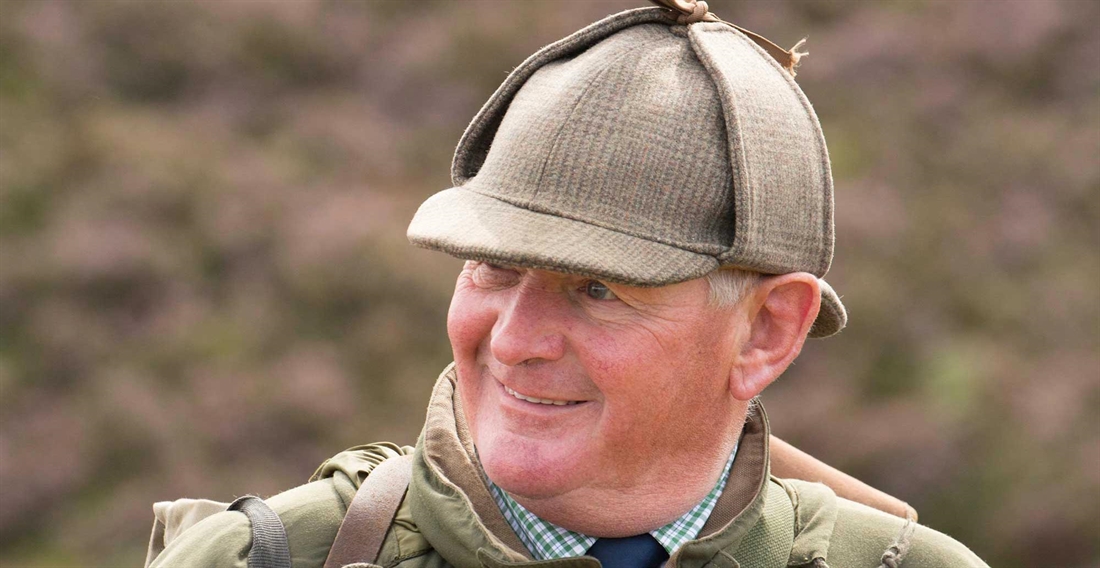
Let’s start at the beginning. When did you first become interested in the countryside and country sports?
It seems like a long time ago now. As a young boy I’d always be outside. I used to go ferreting with my dad and at the weekend I’d potter about with the keeper on the local estate. It was a great upbringing. I grew up in a place called Crosby, between Liverpool and Southport. It’s quite a big town now, but when I was young it backed onto villages and the estate came right up to the back door.
So it was a natural progression into gamekeeping?
At a young age I decided that’s what I wanted to do. I left school and home at the age of 15 and went down to West Sussex where I lived on the Arundel Estate in lodgings, working as a keeper boy for the old Duke of Norfolk. It was my first job and I was there for two years before moving back to Lancashire for a beatkeeper’s position on the estate I grew up helping out on. After two years there, I moved to the Lake District to work on the Dallam Tower Estate for four years.
I’ve also worked on the Boconoc Estate in Cornwall for the Fortescue family, where I spent 14 years. Then it was up to Raby in Durham where I worked with wild game on the lower ground for a decade, before finally settling at Sandringham in Norfolk in 2001. All that made up a 54-year career.
One of the old keepers I knew as a boy once told me to go and work at a few places with different people and learn as much as I could from each, because everyone has their own way of doing things. I’m glad I did.
When did you first develop your passion for wild game?
I returned to Arundel in 1973 after being offered a beatkeeper’s position. It was a fantastic place for wild game. The first two seasons I was there we actually shot more pheasants than we put down. We had a lot of English partridges, too. We didn’t shoot them but we saw good numbers because we were very proactive with predator control. It was at Arundel that I met the late Dick Potts who most people will know for his pioneering grey partridge research with the GWCT – he was just starting a partridge survival project down there. Dick and I became very close friends.
How much has keepering changed since the early days of your career?
There’s a lot more commercialism now, but it’s not always a bad thing and it has preserved a lot of keepering jobs. When I started out, my boss, The Duke of Norfolk, would go all over the country shooting as a guest, and he’d reciprocate by asking all those whom had invited him, to come and shoot at Arundel. Back then there was no commercialism. We had six beats at Arundel and we used to shoot each beat three times a season – and that was it.
I’ve got concerns about the increasing amount of game we’re releasing nowadays, and the challenges we are facing getting all of that into the food chain. I don’t know if we’re producing this amount of game because there’s a demand there, or whether we’re producing it in the hope that there is a demand.
Rearing practices were very different when I started out. I remember the days when we had 300 coops with broody hens on an open rearing field and we’d turn pheasant eggs under the broody hens by hand. From 4am each morning, two of us – one at either end of the rearing field – would sit in a hut with a gun over our knees, listening. If there were any predators the hens would soon raise the alarm. When we went home for lunch at midday and then onto our beats in the afternoon, others would take our place.
One thing that hasn’t changed over the years I’ve been in the profession is the support I’ve received. My wife Amanda has been a rock. They do say that behind every good man there’s a better woman. That support is so important in this job. She’s had to put up with a lot. When we were in Durham the poaching was very bad and we were out most nights. And when we were rearing it was seven nights a week. You’d get two rushed holidays in February each year, then you were back in amongst it. She’s had to sacrifice a lot as we’ve moved around the country. The kids have been brilliant, too.
Is it becoming more difficult for those wishing to build a stock of wild game?
Agri-environment schemes for habitat management are more restrictive now than they once were. This coupled with the general intensification of farming means the battle is getting harder every year.
Previously, the general attitude for set aside stewardship was that you do what you want with it, as long as you set aside a percentage of your ground. And most of the tenants would say ‘well, that’s a bad field, we’ll put that to one side as it’s not very productive’. It used to be easier to work with the tenants and change single blocks of set aside into strips and connected habitats all around the estate. We weren’t as restricted to what we could do and we could put in the mixes that we wanted to put in. We would plant chicory to cut down on aerial predation, for example, and brood-rearing crops for insect production.
There doesn’t seem to be the same degree of flexibility in the schemes now, and there isn’t a one-size-fits-all approach that works. What works well in the north west of England doesn’t necessarily work well in East Anglia, and vice versa.
Habitat is key. The use of insecticides, pesticides and herbicides is widespread today, but the presence of insects and broadleaved weeds is important, not just for game but so many other wildlife species. Our songbirds are in serious decline. Corn buntings, for example, have declined by over 85 per cent since the 1970s, and tree sparrows by more than 95 per cent.You can’t just put wildlife back once you have lost it.
Something needs to change. Across the country, insect populations have declined and it’s not easy to reverse this – the GWCT tell us it will take seven years to build an insect bank back up. We need to be smarter. At Sandringam we monitored insect levels on the estate. They are the key to the survival and success of so many of our wild birds, particularly partridges.
Can you see this changing in the future?
Perhaps there is an opportunity now, with the changes that Brexit require, to come up with a better solution. Government say that there will be more money to incentivise conservation work. They need more people on the panel or board making decisions on these schemes with practical experience, though – keepers work and live in this environment seven days a week, 24 hours a day.
What do you consider to be the greatest threats to game shooting today?
A big issue is the lack of knowledge amongst the general public. How many people really know what a gamekeeper does? We need people to look at a gamekeeper and see a countryside manager who is involved with wildlife conservation and habitat management, not somebody who hangs dead things on a line – those days have finished. We’ve got to move with the times.
I suppose you only have to look at how many kids grow up today to see where part of the problem lies. When I was younger we’d always be in the outdoors, ferreting and exploring with a catapult in the back of our coats. But now kids sit on a tablet or a computer and never go outside. It’s not healthy, is it?
We’re under increasing pressure in the political landscape, too. I personally think we should have an umbrella organisation. The NGO, BASC, GWCT, the CA, we’re all there fighting the cause and all of us are doing a very good job, but we would be stronger if there was one umbrella organisation. Everybody can still do what they’re doing, but that umbrella organisation can then move forward and say ‘we represent x number of people’. You could even get the anglers on board. Other organisations with a million-plus members are going into political discussions in a strong position.
At some point in the future there will be a socialist government, and we need to get our act together now – not when that happens. We need to be more organised.
Another thing we must remember is that we’ll never win an argument unless we have the science behind us. It’s the science that will win the day. We all need to support the GWCT – we’d have lost shooting a long time ago without them. You can’t argue with scientific facts.
Tell us about your role in the formation of the National Gamekeepers’ Organisation?
It was back in 1997 that a group of five of us – all keepers – sat at a pub table and discussed the threats to our profession from public misunderstanding and poor representation. We knew we had to do something about it, and felt that an organisation run by keepers for keepers would make a lot of sense. We each put £100 into a pint pot in the centre of the table. That was how the NGO started.
We travelled the country and spoke to groups of keepers in different counties and they were all very responsive and welcomed the idea. Today, the organisation has some 13,000 gamekeeper and supporter members and does a fantastic job representing the profession.
What is your most prominent sporting memory?
The day we shot just under 300 brace of English partridges at Sandringham – that would stick out in anybody’s memory. We had a hell of a day. We’d built up the English numbers to a point where we had that sort of a shootable surplus. We just hit it right. I remember pushing birds into a sugar beet field, covey after covey after covey. This field was full of partridges and they were all calling to each other. When they started going through the line, a covey would flush and pick up another covey on its way to the Guns. I came here in 2000 and we had 70 pairs of English partridges on the estate. By the 2011/2012 season, we had reached 2,250 pairs – we were carrying a tremendous stock.
The following spring was (according to the GWCT) the worst we’d had for 100 years, and we lost a huge number of birds sitting on nests. We had to start over, but we knew then that it was possible and we had the knowledge so that we could get there again.
There are other things I look back on, too. Simple things that I remember fondly, like a day out ferreting. And away from keepering I’ve got some fantastic sporting memories. I’ve fished for marlin in Panama, and tarpon in Florida. I’ve also got a 20ft sportfishing boat anchored at Wells. I go out into the Wash, but it’s not the best of fishing anymore as there are so many seals. I’ve also shot woodcock in Northern Ireland and wild quail over pointers in the States – both special in their own way.
Plans for the future?
Now that I’m retired I do consultancy work. I’m involved with an exciting new wild bird project down in Dorset. I’m also the honorary president of the National Gamekeepers’ Organisation and sit on the Purdey Awards judging panel.
Eventually, my aim is to start a recruitment agency for gamekeepers. There’s a lot of really good keepers out there, and I’ve put a lot of keepers in work over the years, so I thought it was time I charged a fee for it! I’m probably in a unique position that if I don’t know the person, I probably know someone who does. It’s rewarding to match budding keepers with the right employers and watch them do well.
Who is the best game Shot you’ve ever seen in action?
It would have to be Prince William or Prince Harry – they’d take some beating. They’re both incredible Shots and very stylish, too.
Who would be in your dream team on a day’s shooting?
It’s difficult to pick just a few. I’ve got a very good network of friends that I’ve made over the years through my job.
Roger Thomas, Nick Williams, Sir Gareth Edwards, Bernard Robinson and Dick Morgan from Wales would be there. So would Gary Collins who used to be my beatkeeper at Sandringham. Peter Fawcett, headkeeper at Bollihope, would feature, as would Tim Furbank and lifelong friend Tony Larkin. These are very special people. It’s the people you are with who make a day’s shooting what it is, not the shooting. It’s the camaraderie, the atmosphere and about having a bloody good day.
Related Articles
Get the latest news delivered direct to your door
Subscribe to Fieldsports Journal
Elevate your experience in the field with a subscription to Fieldsports Journal, the premium publication for passionate country sports enthusiasts. This bi-monthly journal delivers unparalleled coverage of game shooting, fishing and big game across the UK and beyond.
Each issue offers a stunning collection of in-depth features, expert opinions and world-class photography, all presented in a timeless yet contemporary design.
Save 10% on shop price when you subscribe, with a choice of packages that work for you. Choose from Print & Digital or Digital only with each journal delivered directly to your door or via the app every other month, plus access to past issues with the digital back issue library.






